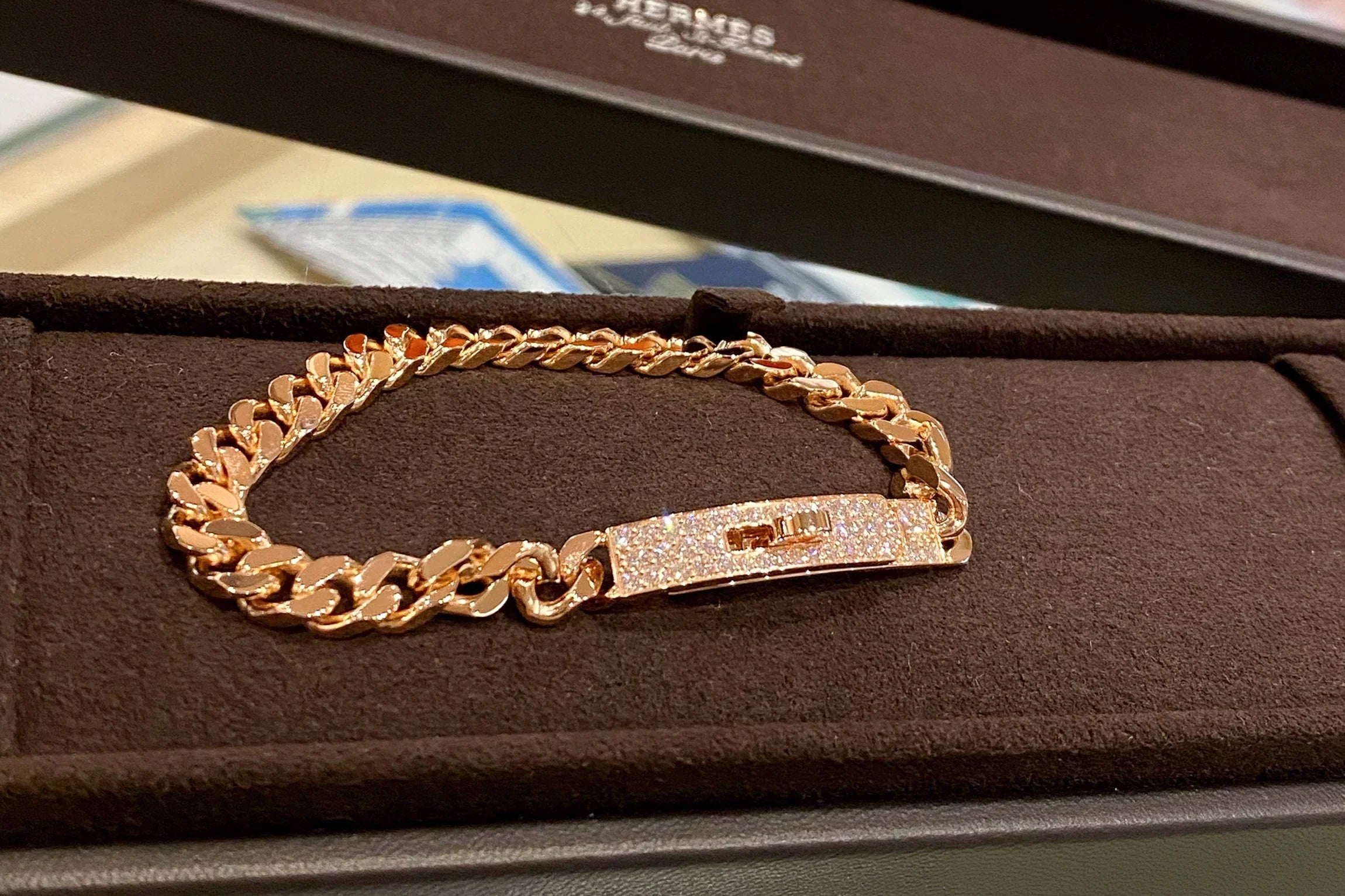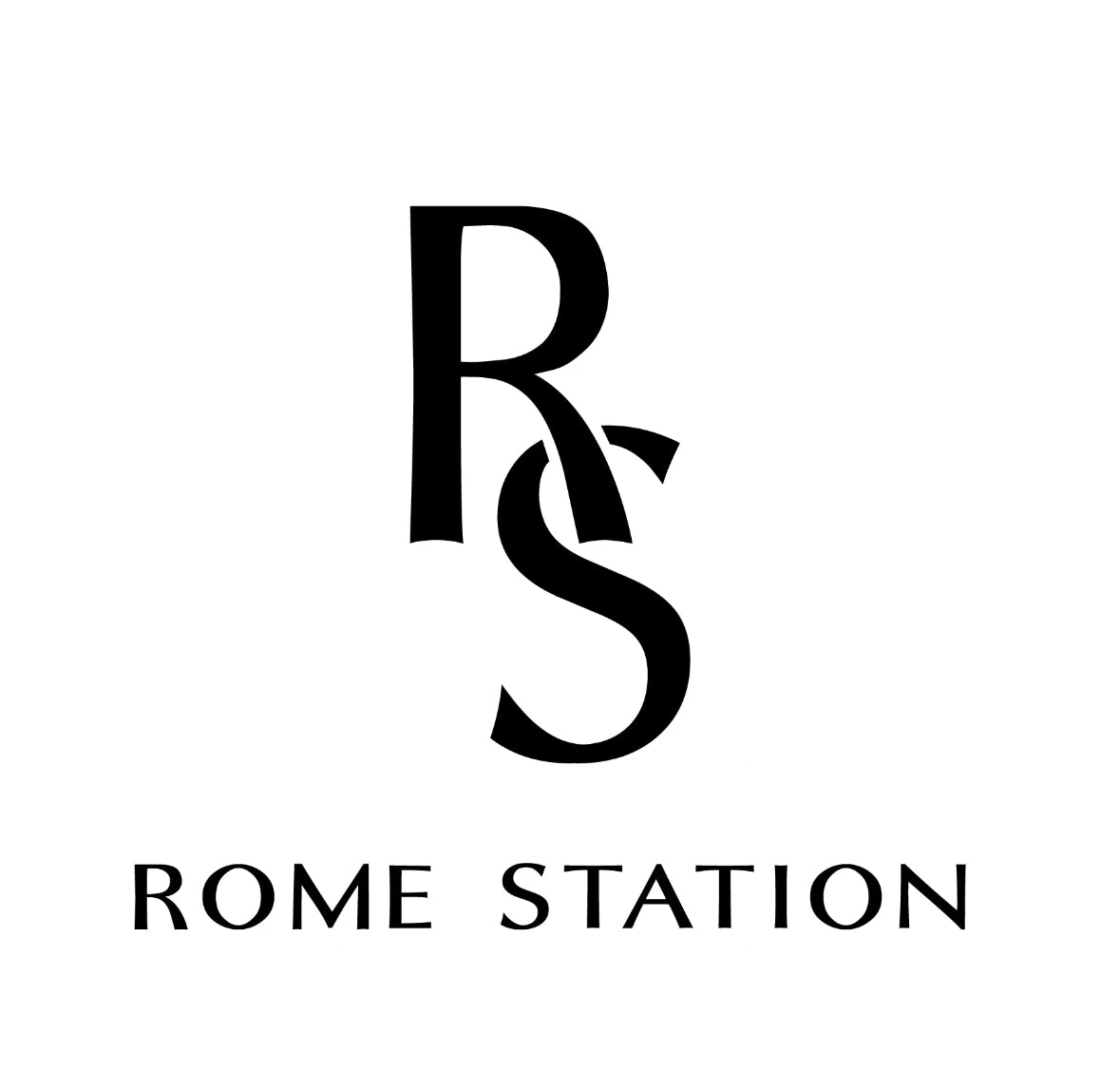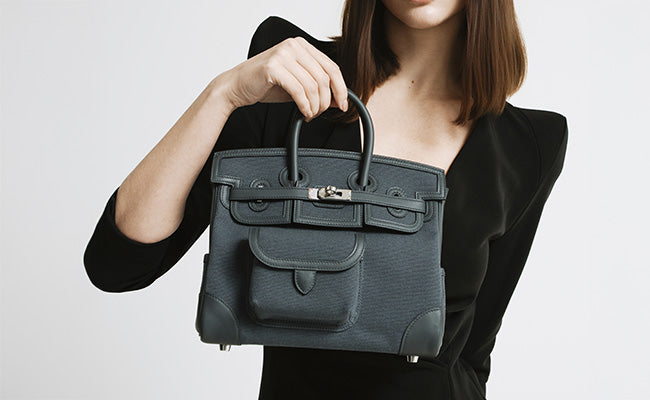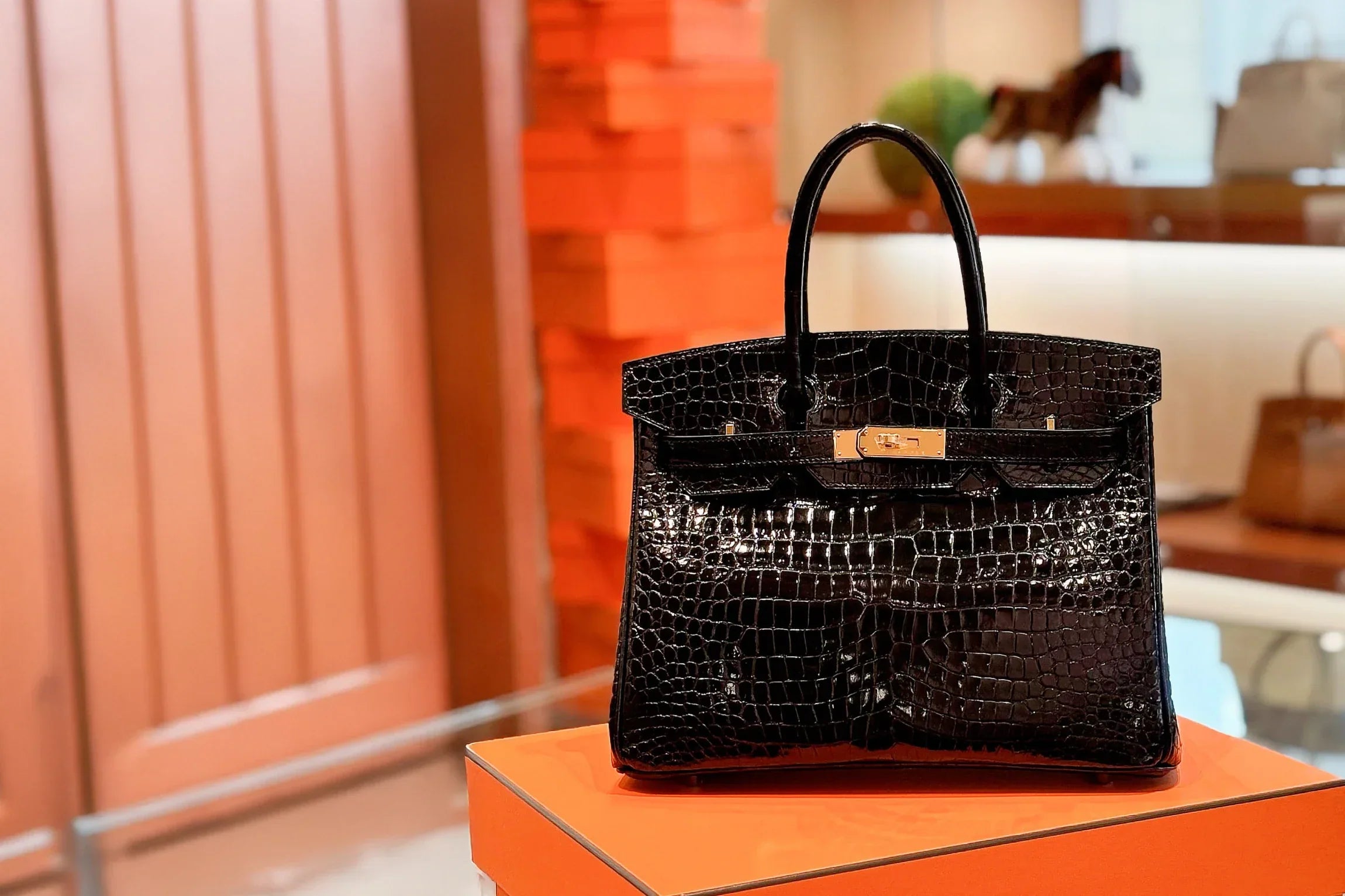
Eco-friendly Luxury: Does Hermès Support Sustainable Practices?
Check out our Hermès collection and Birkin bags!
When it comes to ultra-luxury, Hermès is often top of mind. But with growing concerns about sustainability, a lot of us are starting to wonder if one of the world’s most coveted brands is actually pulling its weight for the planet. Hermès does incorporate some sustainable practices, but their efforts come with limitations and room for improvement.
Let’s dig into their production methods, packaging choices, and sourcing policies to see where Hermès really stands. Whether you’re eyeing a Birkin or just love high-quality craftsmanship, understanding their approach to sustainability is key for more conscious shopping.
Key Takeaways
- Hermès uses some sustainable practices, but not across the board
- Packaging and materials are slowly improving
- Transparency and ethics still have some gaps
Hermès’s Approach to Sustainability
Hermès has built its reputation on exquisite craft, but lately they’re also talking more about environmental and social responsibility. Let’s look at what they’re actually doing to shrink their environmental footprint, their sourcing policies, and the bigger picture of their sustainability efforts.
Corporate Sustainability Strategies
For Hermès, sustainability is tied up with preserving craft and heritage. They’ve set up teams just for this, and publish CSR reports with environmental, social, and governance (ESG) goals. They set targets for cutting energy and water use in workshops and stores.
Staff get trained on sustainable practices and responsible production. Hermès makes a point of sharing progress with the public. They also support artisan jobs in France and invest in local social projects. The approach is pretty structured, but also rooted in their culture of quality and longevity.
Material Sourcing Policies
Hermès is picky about raw materials, favoring natural fibers and leathers sourced under strict ethical rules. For example, alligator skins for bags come from farms certified for animal welfare. To boost transparency, Hermès works with animal-rights groups and relevant international bodies.
Traceability matters here, they want to know exactly where materials come from. Some of their leathers now carry Leather Working Group (LWG) certification, which points to better environmental management. For silk and other textiles, Hermès prefers suppliers using environmentally friendly dyes and processes. Here’s a quick look:
| Material | Ethical Certification | Traceable to Source | Key Focus |
|---|---|---|---|
| Leather | LWG, animal welfare | Yes | Quality, ethics |
| Alligator/Croc | Certified farms | Yes | Animal protection |
| Silk/Textiles | Eco-friendly suppliers | Yes | Low-impact dyes |
Reduction of Environmental Impact
Hermès wants to lower its carbon emissions and waste. They’ve increased renewable energy use in manufacturing sites and are working on water recycling. Packaging is another area of focus. There’s been a big reduction in single-use plastics and more use of recycled packaging.
They also offer repairs and refurbishing, which helps keep products out of landfills. Waste from leather and textiles is turned into small accessories or donated for creative projects. They keep looking for ways to cut emissions and lighten their footprint across the supply chain.
Eco-Friendly Practices in Production
At Hermès, sustainability isn’t just a buzzword, it’s built into how they make each piece. Their approach combines responsible sourcing, skilled craftsmanship, and efforts to use less energy in workshops.
Leather and Exotic Material Traceability
Transparency is a big deal, especially for rare and exotic leathers. Hermès tracks materials closely, using strict traceability standards from farm to atelier. Every skin, calf, ostrich, or crocodile, has an audited journey before it becomes a finished product.
They stick to the CITES framework (the Convention on International Trade in Endangered Species) and only work with farms that meet tough welfare and environmental standards. Frequent audits and certified suppliers are the norm. Traceability data for exotic skins gets updated regularly, so there’s no room for illegal or unethical sourcing.
Artisan-Centred Craftsmanship
Iconic bags are made by experienced craftspeople, many of whom train for years in Hermès workshops. Each piece is made start-to-finish by a single artisan, which helps cut waste compared to mass production lines.
Training covers design, handcraft, and clear protocols for using sustainable materials, minimizing scraps, and recycling offcuts. Ateliers also offer repair and restoration, so bags can last decades, not just seasons.
Energy-Efficient Manufacturing
Hermès is working to lower emissions and energy use in production. Several French workshops use geothermal and solar power. Lighting is mostly LED, and many processes now use low-energy machinery.
They report carbon emissions data annually and keep setting new energy-saving goals. As of 2024, over half their factories had ISO 14001 certification for environmental management. The aim is to shrink the carbon footprint without losing what makes Hermès bags special.
Sustainable Packaging Efforts
Hermès is changing its packaging to match sustainability goals, blending luxury with responsible sourcing. Their choices in materials and waste reduction are easy to spot.
Eco-Conscious Packing Materials
Those signature orange boxes? They’re made from 100% recycled cardboard. The paper lining is FSC-certified and comes from responsible suppliers. By focusing on recyclable content and eco-certifications, Hermès manages to keep that premium feel without tossing environmental responsibility out the window.
The ribbon is now organic cotton, and dust bags are untreated cotton in natural tones, with minimal dyes. Reusable packaging is encouraged, so boxes, bags, and pouches stick around. This adds to the brand’s allure and helps extend the life of packaging.
Recycling Initiatives
Hermès has set up systems to recycle and reuse packaging. Boutique staff often ask clients to return or repurpose boxes and ribbons, whether for repairs or gifting. This keeps packaging in use and out of landfills.
Some stores join recycling programs for returned bags, boxes, and pouches, especially when they’re too worn for reuse. The brand also works with local partners to recycle cardboard and paper at a regional level. It’s not perfect, but it shows a real effort to close the loop and reduce the environmental impact of luxury shopping.
Ethical Sourcing and Animal Welfare
Hermès puts its reputation on the line for responsible sourcing and humane animal treatment. These are hot topics for eco-minded luxury fans and central to how Hermès operates.
Supplier Code of Conduct
Hermès has a strict Supplier Code of Conduct for partners. This covers labor rights, safe working conditions, and environmental practices. Suppliers go through regular audits and reviews to keep them accountable.
The code spells out guidelines for responsible sourcing and traceability. Every supplier must guarantee fair treatment of workers and follow environmental laws. If they don’t, Hermès ends the relationship.
Transparent supply chains are the goal. Some supplier data and ethical frameworks are available in published reports. That level of scrutiny isn’t common in luxury.
Animal Welfare Commitments
Hermès is famous for exotic leathers, so animal welfare is a big deal. The brand’s policies require all animal-derived materials to come from sources that meet international animal welfare standards like CITES.
Crocodile, ostrich, and calfskins go through strict supply checks and facility audits. Hermès demands humane handling and proper living environments for animals. They work directly with breeders and tanneries to push for better welfare.
Hermès publishes updates on animal welfare in annual CSR reports. We’re not perfect, but we’re making progress in a world where luxury and responsibility don’t always overlap.
Circular Economy and Product Longevity
Hermès puts a lot of emphasis on keeping products in circulation as long as possible. This preserves craftsmanship and keeps each piece valuable.
Bag Repairs and Refurbishing
Customers can have their bags repaired and refreshed at Hermès workshops. Often, the same artisans who made the bags handle the restorations.
When hardware tarnishes or leather loses its shine, you can bring bags to a Hermès boutique for bespoke care. Here’s what’s usually on offer:
| Service | Description |
|---|---|
| Polishing | Revives metal hardware and fasteners |
| Stitch repair | Restores seams without visible alteration |
| Leather spa | Conditions, cleans, and replenishes patina |
Hermès encourages repairs over replacement, helping keep bags out of landfills and in use for years.
Resale and Vintage Market Initiatives
Hermès bags pop up on trusted luxury resale platforms, often holding their value. Some resellers work with Hermès for authentication and care, which helps fight fakes and keeps quality up.
The brand has its own Hermès Vintage concept in select stores, letting you buy authenticated pre-owned pieces. These are often refurbished and come with detailed histories.
Hermès doesn’t run a large-scale buyback or official resale service, but its quiet entry into the pre-owned market supports responsible shopping and keeps bags loved for decades.
Transparency and Accountability
In luxury, openness is almost as prized as elegance. The Hermès community expects honesty, especially when it comes to environmental commitments.
Reporting on Progress
Hermès puts out annual sustainability reports that lay out their targets and results. The reports cover environmental impacts like carbon emissions, water use, and waste, plus materials sourcing and labor practices. You can find these on their website, though you might need to dig a bit to get the details.
For those who want specifics, Hermès breaks down goals, like cutting greenhouse gas emissions by a certain percentage or using more responsible leather suppliers. Key sustainability indicators get summarized, and tables usually show progress over several years. The reporting is honest, but not always self-critical. Transparency is there, though sometimes the details feel a bit thin compared to some rivals.
Third-Party Certifications
Certifications help keep eco-claims in check. Hermès is part of programs like the Leather Working Group (LWG) for ethical leather tanning and has ISO 14001 for environmental management in some workshops. These badges show up on their site and sometimes on product tags.
But Hermès isn’t certified in every category, there’s no universal organic or vegan certification across collections. External auditors help verify many (but not all) claims. The selective use of third-party certification adds credibility, even if it won’t satisfy the strictest eco critics.
Community and Social Responsibility
Hermès doesn’t just focus on luxury design and rare materials. They’ve put real effort into supporting the people behind their products and backing causes that fit their values.
Artisan Support and Fair Working Conditions
Hermès is built on craftsmanship. Most products are made by skilled artisans in France, not churned out in anonymous factories.
Workshops prioritize safety, skill-building, and employee well-being. New artisans go through years of training to keep traditional techniques alive.
Hermès is open about hiring permanent staff, not relying on seasonal or temp workers, which helps with job security and stability. Keeping production local also helps protect workers’ rights and lets them monitor conditions closely.
Annual reports confirm that artisans get competitive pay, health benefits, paid leave, and chances for growth. Hermès has signed global charters to uphold social responsibility and ethics in their supply chain.
Philanthropic Partnerships
Hermès supports several philanthropic projects. Through Fondation d’entreprise Hermès, they’ve invested in arts education, environmental protection, and social innovation.
They back international programs that help youth build creative skills and organize exhibitions to highlight artistic talent. In Canada and elsewhere, Hermès has teamed up with schools and NGOs to broaden access to culture and design.
The foundation also funds wildlife conservation and circular economy research. Some partnerships promote sustainable materials and pass on traditional skills to younger generations, staying true to both luxury and responsibility.
Challenges and Limitations
When you dig into Hermès and sustainability, it’s clear that mixing luxury with eco-friendliness isn’t exactly straightforward. The artistry behind those Birkin bags is undeniable, but let’s not kid ourselves, the use of exotic leathers and rare materials sparks plenty of debate.
Alternative and recycled materials? They just don’t hold the same magic for a lot of collectors. We’re attached to heritage and tradition, and that makes sudden changes in sourcing or production… well, complicated.
A few of the main headaches:
- Supply chain transparency: Hermès keeps things close to the vest, so verifying every claim from the outside is tough.
- Resource intensity: Leather tanning and all that meticulous craftsmanship eat up a lot of energy and water.
- Animal welfare: Using exotic skins still brings up ethical questions, inside and outside the fanbase.
Hermès puts money and effort into sustainability, but honestly, it doesn’t always feel fast. The brand’s reputation for quality is everything, and that can make innovation in materials or production a pretty slow burn.
So, there’s this constant push and pull: keep Hermès iconic, but answer to a world that’s demanding more from luxury. Sometimes it feels like the industry just moves at its own, stubborn pace, timeless, but rarely the first to leap.
Innovative Approaches in Sustainable Luxury
Sustainability in luxury needs more than recycled shopping bags. Hermès has started to experiment with alternative materials and responsible sourcing in ways that are actually interesting.
Take the Victoria bag, it now uses a mushroom-based leather called Sylvania. This is a cool shift, cutting down on animal hides but keeping the look and feel pretty close to what we expect. Science meets couture, basically.
There’s more: Hermès audits suppliers and has tightened up traceability for its leathers and exotics. Here’s a quick peek at what they’re doing:
| Approach | Description |
|---|---|
| Bio-based Materials | Sylvania mushroom leather for select products |
| Responsible Sourcing | Leathers from certified, regulated suppliers |
| Traceability | Tracking origins of all animal-based materials |
Recycling isn’t off the table, either. Some scarves get new life from leftover textiles or unsold collections. And repair services are a big deal, letting us keep our investment pieces going for years.
But the classic craftsmanship? Still there. Every bag’s handmade in France, built for longevity and repair. The blend of tradition and new ideas feels pretty true to Hermès.
Frequently Asked Questions
Hermès has rolled out new materials, tweaked sourcing policies, and started sharing more about their environmental impact. We’re all watching their ESG moves, material picks, and openness, trying to see if their luxury can really line up with greener values.
How does Hermès integrate sustainability in their luxury lineup?
Hermès leans into slow fashion, focusing on craftsmanship and durability. They’ve invested in workshops that use less energy and stick with old-school techniques that generate less waste.
Some limited editions use upcycled materials, and repair services help keep our favorite pieces around longer.
Can you dish the deets on Hermès's eco-friendly material sourcing?
Hermès gets leather and silk from suppliers with ethical and environmental certifications. Most leather comes from European tanneries under strict rules, aiming to cut water and energy use.
They’re dabbling in plant-based alternatives, but honestly, those are still a tiny slice of the collection.
What's the 411 on Hermès's ESG strategy for staying green and glam?
Hermès sets targets for using less water, energy, and lowering emissions across their supply chain. They join environmental ratings and share updates in a yearly Sustainability Report.
They also update employee training and sourcing policies to keep up with ESG standards.
Is there any truth to the buzz that Hermès leather goods are sustainably produced?
Hermès says all leather goods can be traced to certified farms and tanneries. Their process aims for durability and repairability, so less ends up as waste.
Independent reviews show some real progress, but there’s still room to grow in certain areas.
Has Hermès stepped up their game with their Sustainability Report in 2024?
The 2024 report digs deeper into supply chain transparency, material tracing, and energy use. They’ve set new goals for cutting emissions and using more renewable energy, and there are bigger commitments on biodiversity.
They also shared more about animal welfare audits, finally answering some critics about transparency.
In the context of going green, does Hermès' financials reflect a commitment to Mother Earth?
Hermès has started channeling some profits into sustainable innovation and renewable energy upgrades at their facilities. You’ll spot investments in recycled materials, circular design, and artisan training if you dig into their financial disclosures.
But let’s be honest, luxury margins and eco-friendly moves don’t always balance out. It’s worth keeping an eye on whether these numbers translate to real-world progress.



